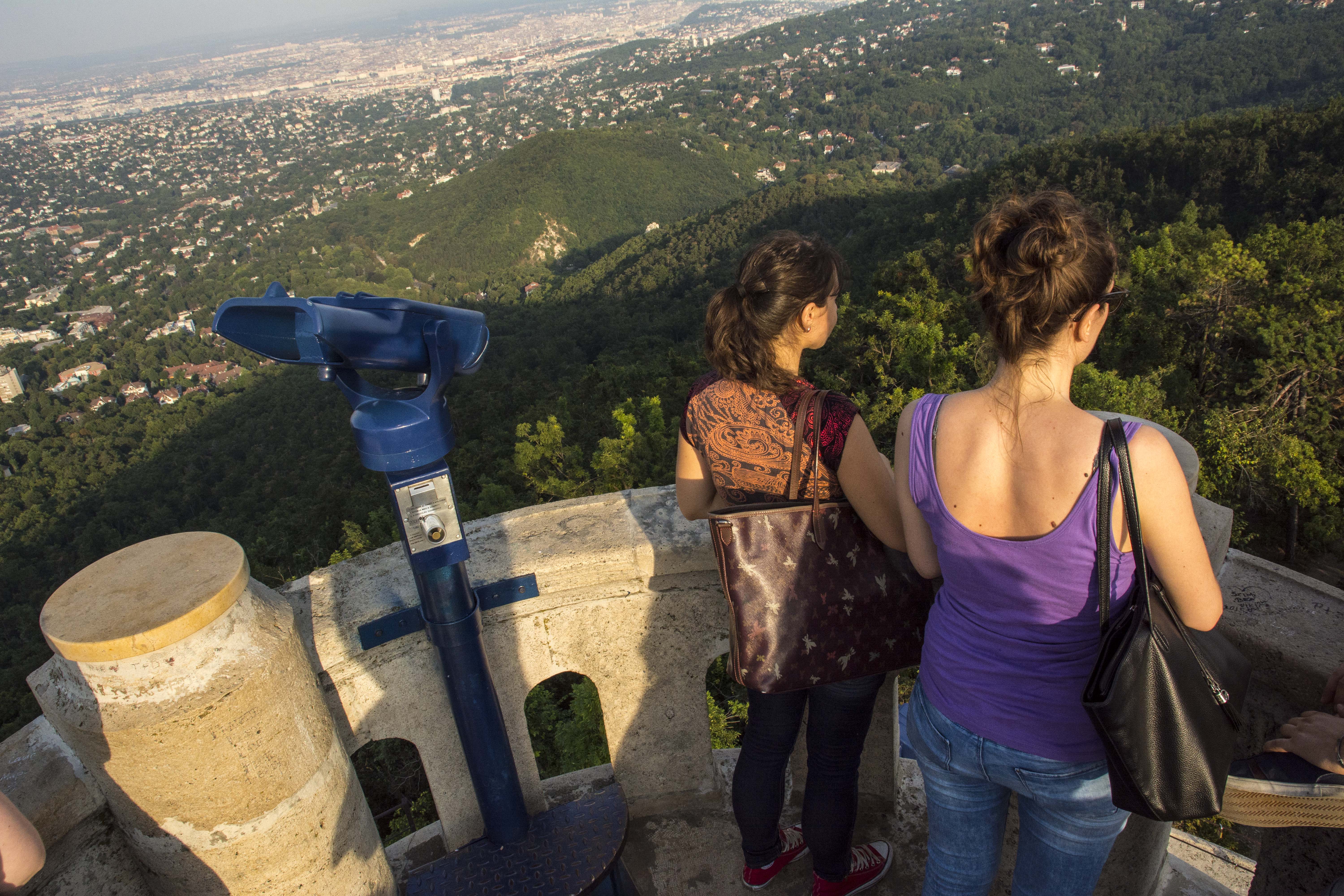The soaring Buda Hills provide plenty of incredible viewpoints over Hungary’s capital, and humans have been scaling these peaks to get far-reaching perspectives since time immemorial. Today we can visit several impressive lookout towers that not only offer sweeping panoramas over Budapest and beyond, but which are also monumental sights of local history. From architectural landmarks to remnants of past wars, these five observation posts are doubly fascinating for any Budapest fanatic.
Citadel
Budapest’s biggest lookout tower is actually a fort crowning central Gellért Hill – however, the Citadel was not built to defend the city, but to stand as a constant threat over the local populace. After the oppressive Habsburg Empire vanquished Hungary’s 1848 Revolution, the Austrian military had this stronghold constructed by Magyar forced labourers during 1851-1854, equipping it with 60 cannons pointed at Budapest localities to remind the Hungarians who was in charge. The Austrian forces finally decamped from the Citadel in 1897, and Budapest’s iconic Liberation Monument was built beside it after World War II, but during Hungary’s 1956 Revolution the occupying Soviet forces seized this redoubt and opened fire on the freedom fighters below. Fortunately, the Citadel has been a peaceful setting since then, and now everyone can come here to admire powerful views over the Magyar metropolis.
Fishermen’s Bastion
While this Budapest postcard superstar serves no military purpose, Fishermen’s Bastion is a stunningly beautiful observation point affording sparkling vistas over the Danube, Pest skyline, and far beyond. Built on the eastern side of the Castle District between 1895 and 1902 by renowned Magyar architect Frigyes Schulek – who had previously rebuilt the Matthias Church next door – this fairy-tale lookout features seven towers, each representing one of the original Hungarian tribes that settled in the Carpathian Basin during the Dark Ages. Regrettably, the construction of Fishermen’s Bastion undermined the foundations of a nearby 13th-century Dominican church and cloister, which later had to be demolished; remnants of that storied structure can still be seen within the adjacent Hilton Budapest. Nonetheless, Fishermen’s Bastion is today considered as one of the city’s must-visit landmarks.
Széchenyi Hill Lookout Tower
After Buda’s Cogwheel Railway was built in the 1870s, the lofty neighbourhood of Svábhegy became a popular resort destination, and to honour Count István Széchenyi – known as “the Greatest Hungarian” for spearheading the construction of the Chain Bridge, the Academy of Sciences, and other important 19th-century developments – a fanciful lookout tower was erected here in 1898. Designed by Miklós Ybl (the architect of Budapest’s Opera House and Várkert Bazaar), this panoramic monument features broad staircases with relief statues of lions’ faces on the banisters, and a central stone turret topped by an ornamental metal spire and flagpole. This elegant observation point overlooks the undulating Buda Hills and many major Budapest landmarks, and is located just a short walk away from the Széchenyi Hill terminus of the Children’s Railway at the intersection of Széchenyi-emlék út and Rege út.
Elizabeth Lookout Tower
Perched atop the highest apex of Budapest – János Hill, rising 527 meters above sea level – the Elizabeth Lookout Tower is a delightful reward for anyone who hikes to this lofty site, even if they receive a considerable boost by riding the Zugliget Chairlift or Children’s Railway most of the way up. Built in 1911 according to the imaginative plans of Frigyes Schulek (architect of the aforementioned Fishermen’s Bastion), this crenelated monument has something of a wedding-cake appearance, and is named after Empress Elisabeth, the wife of Habsburg Emperor Franz Joseph and a beloved figure among Magyars still today; Elizabeth Bridge and Erzsébet tér are also named in honour of “Sissi”. Not surprisingly, the views from the top are spectacular – while it’s fun to spot teeny Budapest landmarks citywide, this unique vantage point provides wide vistas over the dramatic Buda Hills and far beyond.
Hármashatár Hill Lookout Tower
Built only two years ago, the geometrically intriguing wooden watchtower at the summit of Óbuda’s Hármashatár Hill is not historic in and of itself, but hikers who trek up here will find notable attractions nearby that stand testament to Budapest’s often-troubled past. During World War II, this hilltop was the site of several antiaircraft artillery bunkers manned by soldiers tasked with shooting down American and British bombers that were striking the city from the south, and still today these concrete emplacements remain here (minus the mounted guns, of course). From this panoramic peak, it’s easy to understand why military brass would choose this place for observation purposes – the perspective over central Budapest looks directly downriver along the Danube, affording gorgeous views over all of its downtown bridges and landmarks. Learn how to reach the lookout tower by reading this article.




